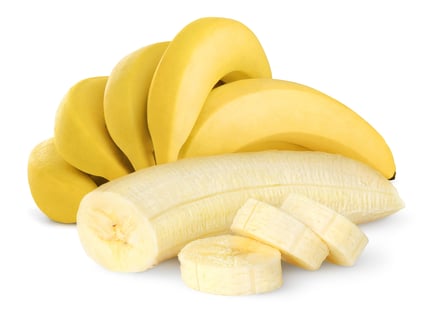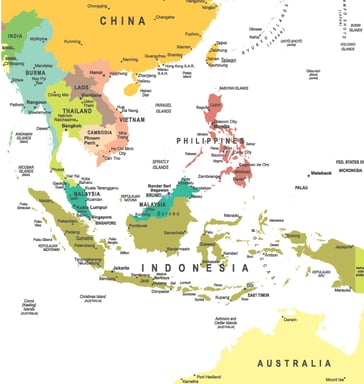 It has happened before, in our very recent past. The bananas we know today are not the same as those enjoyed by previous generations. In fact, most of our grandparents enjoyed a different variety of banana altogether: the Gros Michel banana, a sweeter fruit with a slightly thinner skin. Unfortunately, by the mid 1950’s the Gros Michel species was all but depleted. The cause? A mycotoxin-producing fungus called fusarium oxysporum f. sp. cubense, commonly known as “Panama Disease” or “Fusarium Wilt.”
It has happened before, in our very recent past. The bananas we know today are not the same as those enjoyed by previous generations. In fact, most of our grandparents enjoyed a different variety of banana altogether: the Gros Michel banana, a sweeter fruit with a slightly thinner skin. Unfortunately, by the mid 1950’s the Gros Michel species was all but depleted. The cause? A mycotoxin-producing fungus called fusarium oxysporum f. sp. cubense, commonly known as “Panama Disease” or “Fusarium Wilt.”
The Bananas of the Past
The isolate that wiped out the Gros Michel banana was classified as fusarium oxysporum f. sp. cubense race 1. The mycotoxin being produced, Fusaric Acid, was not the main concern in this “extinction,” but rather the fungus. Fusarium Wilt quickly consumes a plant, leaving it useless. It causes a yellowing of the leaves, followed by a wilt and buckling at the base. With an ability to lay dormant in soil for up to 30 years, it isn't so much that the Gros Michel banana is extinct, but that we have nowhere left to grow it due to the threat of Fusarium Wilt. Because most plantations were started using existing and infected rhizomes, this disease is now found in nearly all banana producing regions. For a time, islands in the South Pacific, the Mediterranean, Melanesia, and Somalia were not yet affected by this disease, but more recently the disease has spread to many of these areas. Due to the invasive nature of fusarium oxysporum f. sp. cubense in soil, large areas of fields have been left abandoned. Environmental impacts are seen as new areas are cleared for additional cultivation and this trend continues.
The Bananas of Today
Naturally resistant to race 1, touting a thicker  skin and a naturally sweet taste, the Cavendish banana quickly took over as the world's main banana cultivar. The Cavendish has flourished from the 1950’s until now, reaching supermarkets the world over. In the early 1990’s, however, a new and detrimental strain of fusarium oxysporum f. sp. cubense called tropical race 4 was discovered in Taiwan. It soon reached South Eastern Asian countries including China, Indonesia, Malaysia, and the Philippines. Since then, there have also been reports of tropical race 4 in areas such as Jordan and Africa. Thousands of hectares have already been destroyed, and sadly for banana lovers everywhere, there are no known cultivars waiting to replace the Cavendish. Tropical race 4 affects not only the Cavendish banana, but also plantains, certain dessert bananas, and cooking bananas.
skin and a naturally sweet taste, the Cavendish banana quickly took over as the world's main banana cultivar. The Cavendish has flourished from the 1950’s until now, reaching supermarkets the world over. In the early 1990’s, however, a new and detrimental strain of fusarium oxysporum f. sp. cubense called tropical race 4 was discovered in Taiwan. It soon reached South Eastern Asian countries including China, Indonesia, Malaysia, and the Philippines. Since then, there have also been reports of tropical race 4 in areas such as Jordan and Africa. Thousands of hectares have already been destroyed, and sadly for banana lovers everywhere, there are no known cultivars waiting to replace the Cavendish. Tropical race 4 affects not only the Cavendish banana, but also plantains, certain dessert bananas, and cooking bananas.
What Can Be Done to Save the Banana?
Greater genetic diversity between banana cultivars is needed in order to fight back against tropical race 4. The only real solution to the problem is to find hosts that are resistant to the disease. Research is being conducted to develop and determine the effectiveness of genetically modified bananas that are believed to be resistant to tropical race 4. Since a resistant cultivar has not yet been found, it is imperative to identify and monitor this disease to prevent the spread of it. Symptoms of this disease must be detected early and laboratory analysis must be conducted in a timely manner. A meeting was held in 2009 at the Regional Organization for Plant and Animal Health headquarters in El Salvador, which resulted in training courses on topics such as disease management, symptom recognition, and sampling procedures. Training courses have been conducted in Costa Rica, Cuba, Mexico, Colombia, Ecuador, Peru, Nicaragua, Puerto Rico, and Dominican Republic. Only time will tell if efforts to save the banana will be successful.
As illustrated in the case of the banana, mycotoxins and mycotoxin-related diseases can wreak havoc on the food supply. Analytical testing is a necessary step to be taken in order to manage this problem. Here at Trilogy, we test for several mycotoxins produced by Fusarium. For more information about the testing services we offer, visit us at trilogylab.com or contact us.

Share on Social Media: